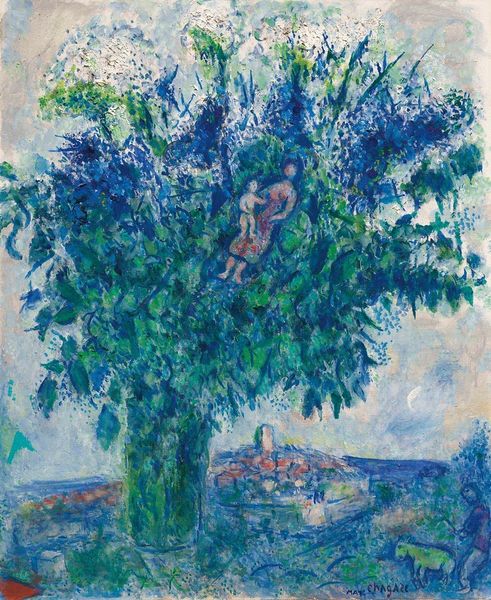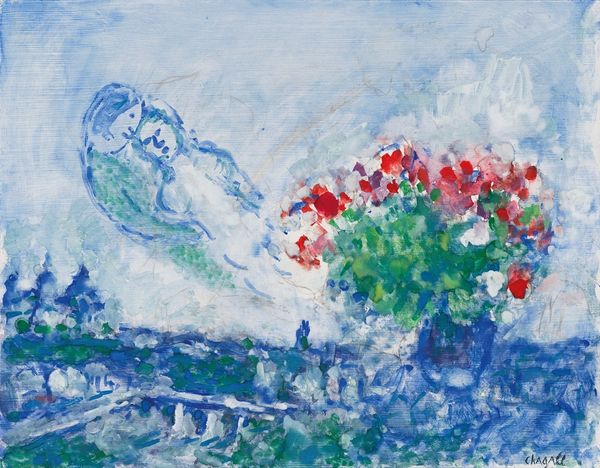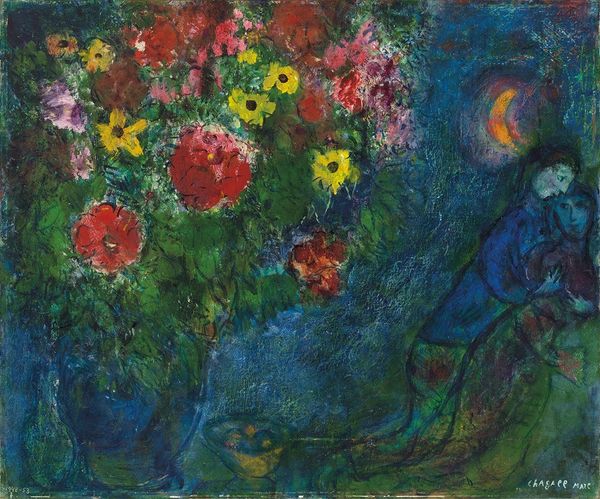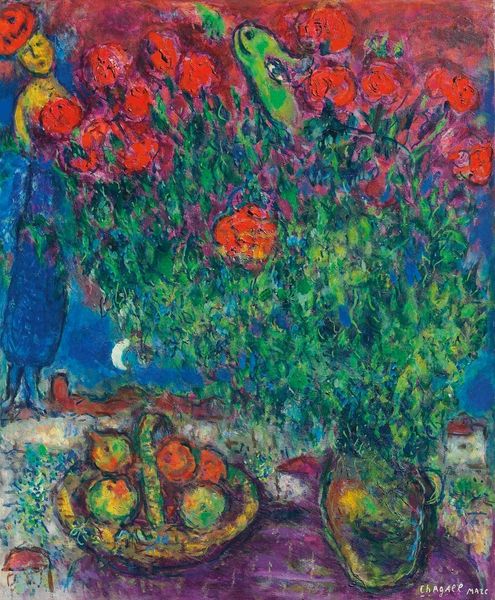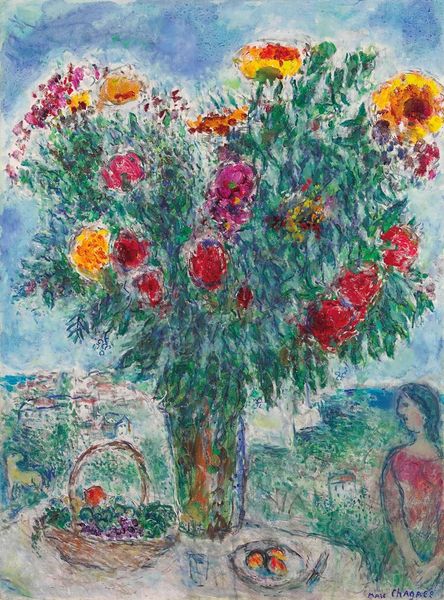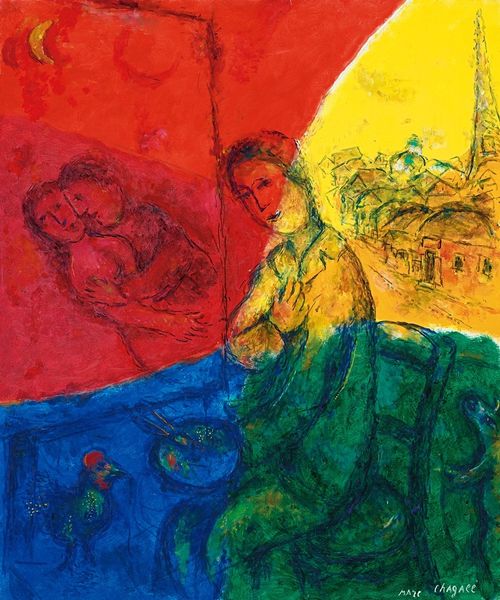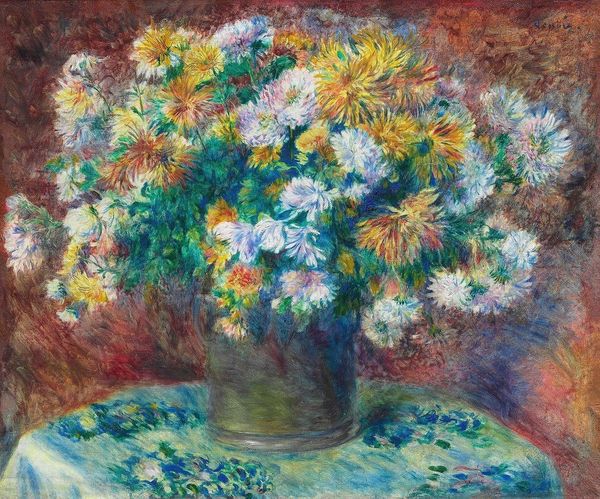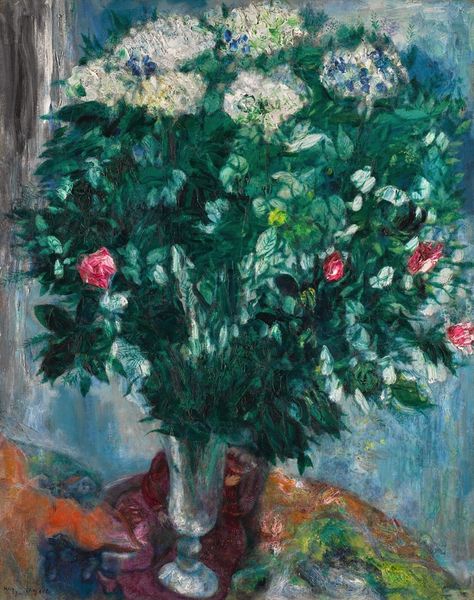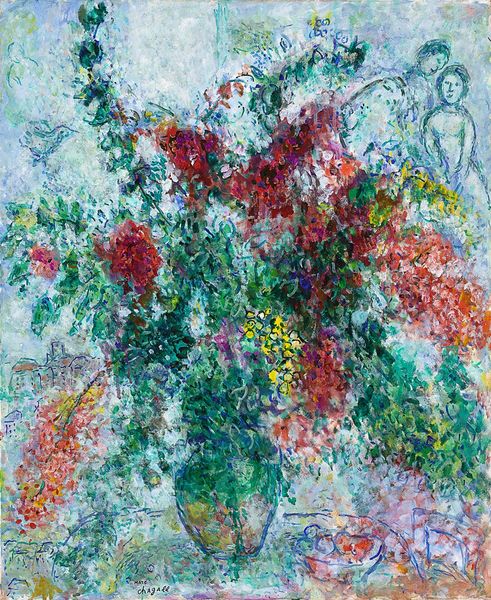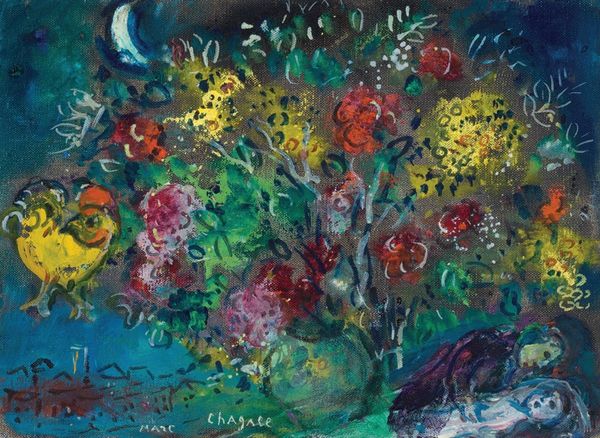
Copyright: Modern Artists: Artvee
Editor: We're looking at Chagall's "La Mariée de Notre-Dame," made between 1968 and 1972, a mixed-media painting of a dreamlike Parisian cityscape. It feels so optimistic and romantic. What stands out to you? Curator: The painting’s public role is interesting; consider Chagall's commissions, particularly his work for public spaces after the Second World War. How might this imagery, combining personal and public symbols, reflect a desire for collective healing and renewed hope in the post-war era? The very act of depicting Notre Dame, a symbol of French identity, carries political weight, doesn’t it? Editor: It does. It's almost like he’s making a statement of resilience, or maybe reclaiming something beautiful after destruction. I mean, why focus on such an iconic monument otherwise? Curator: Precisely. Think about the political backdrop when this was created. France was still grappling with its colonial past, its identity was in flux, and there were powerful political and social movements in full bloom. And Notre Dame, more than just a building, represents centuries of history, power, and religious significance. What's he doing by placing a bride there, cloaked in that sheer light? Editor: Perhaps linking love and hope with that national identity? The composition feels like a memory—almost unreal, maybe that explains some of the fauvist inspiration, right? Curator: The layering of imagery, that dreamlike quality… it encourages us to reconsider how we understand cultural heritage and its relationship to individual experiences of love and memory. His inclusion of this "every-woman bride" suggests it all. The people down by the cathedral and Seine are enjoying her, with you and me, the viewer. Editor: I see it now. Looking at it from that angle makes Chagall's choices even more meaningful. It gives so much depth and nuance to the romantic elements. Curator: Absolutely. By examining art through a socio-political lens, we uncover the complex dialogue between artists, their work, and the world around them.
Comments
No comments
Be the first to comment and join the conversation on the ultimate creative platform.
